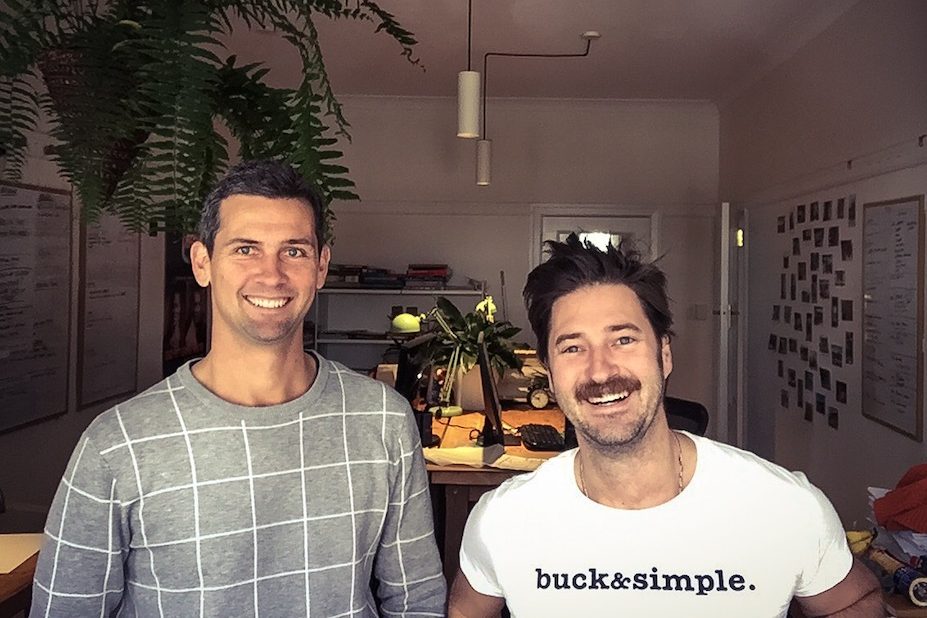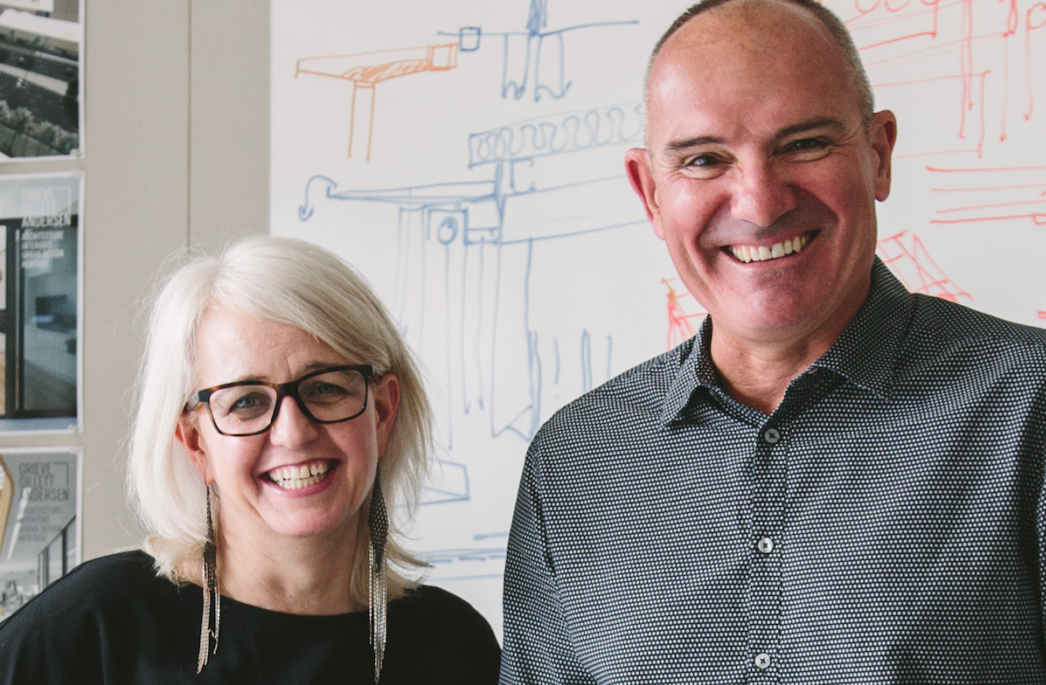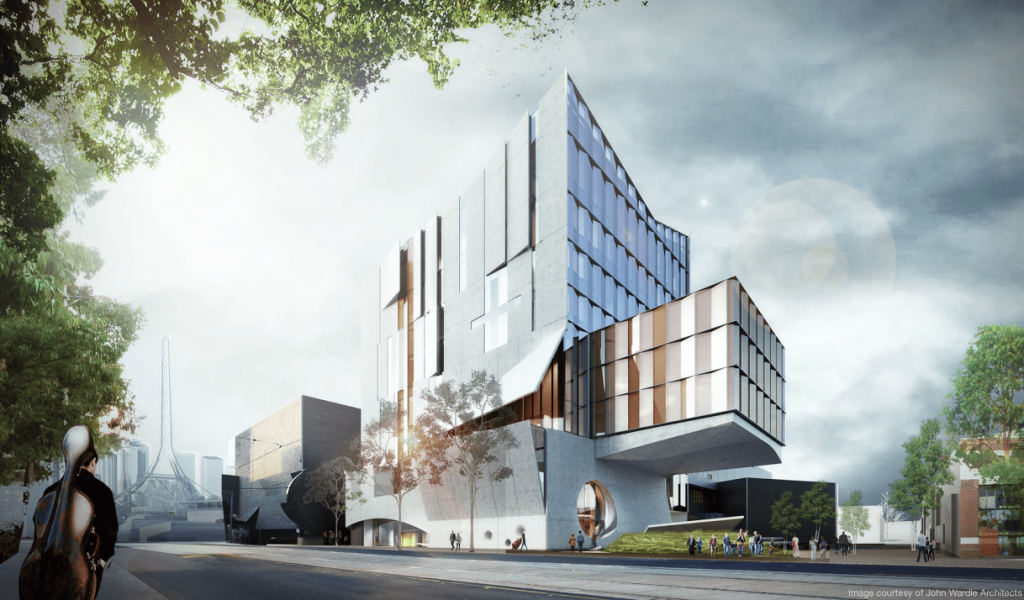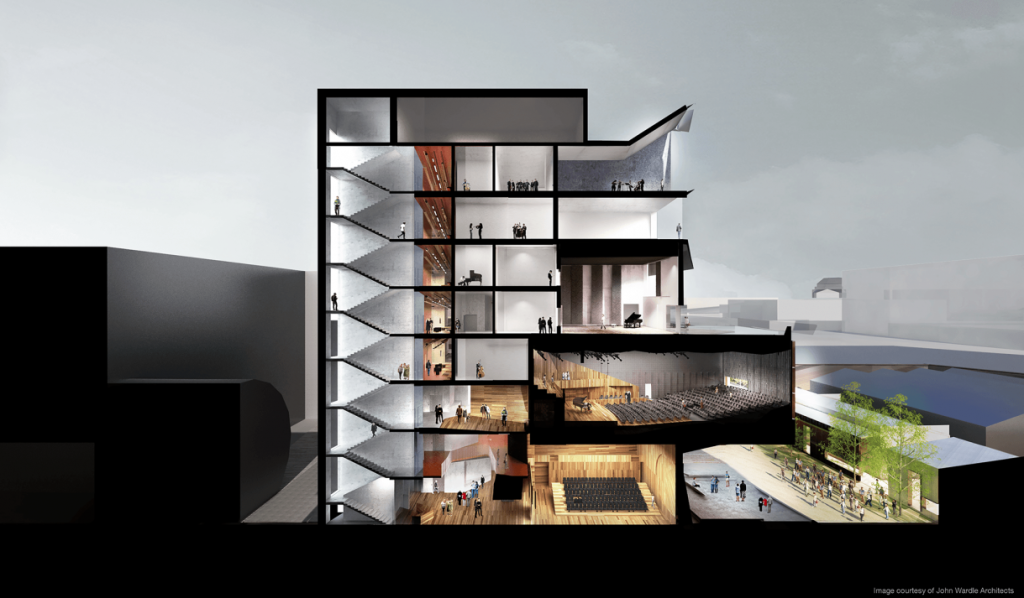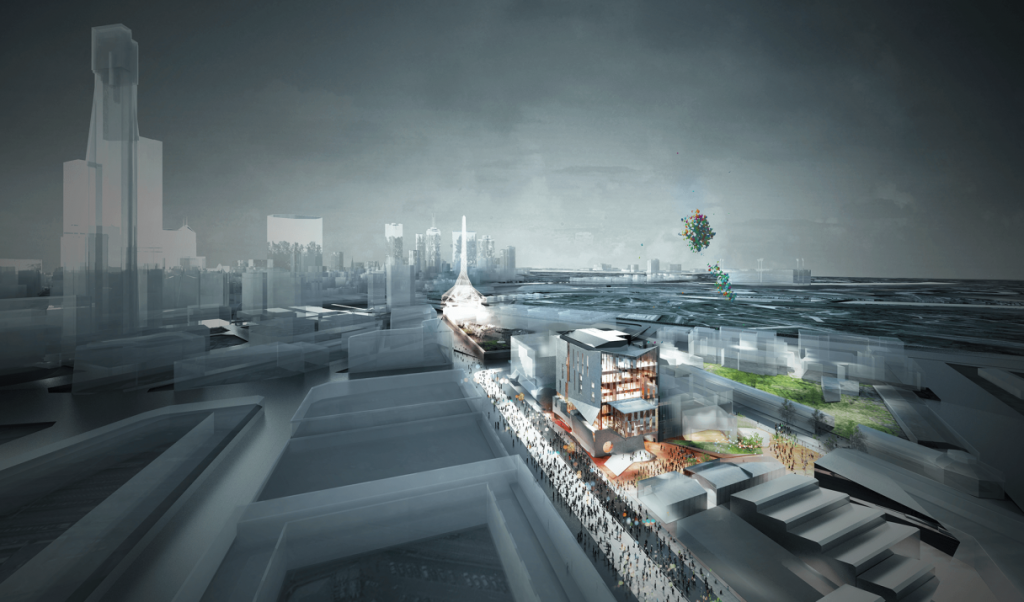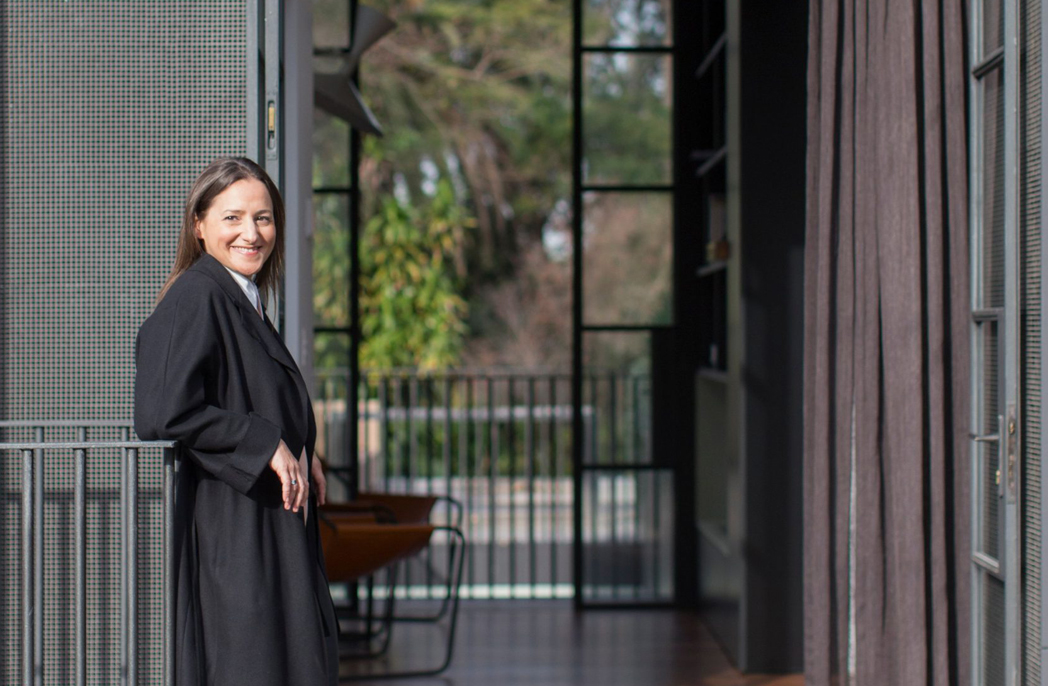
John Wardle Architects to design world-class music facility
John Wardle Architects to design world-class music facility
Share
Renders courtesy John Wardle Architects.
John Wardle Architects has been chosen to design a $105.5 million building for the Melbourne Conservatorium of Music (MCM), following a $3 million grant from the Victorian State Government.
The new facility, situated on Southbank, will help consolidate existing MCM staff and students on the Southbank campus and will include a 443-seat auditorium, as well as a public square that will contribute to the community space plan for the Melbourne Arts Precinct Blueprint.
The learning and rehearsal spaces are interspersed with bell-shaped portholes, with rooms spread over eight storeys.
Martyn Myer, who alongside The Myer Foundation and The Ian Potter Foundation, has made contributions to the Conservatorium project, said that it will “be a new jewel in the crown of Melbourne’s legendary musical landscape.”
ADR spoke with project architect Kah-Fai Lee about the facility.
What were the key points of inspiration behind the design of the Conservatorium?
“We were inspired by the vision articulated by MCM’s Ormond Chair and Director, Professor Gary McPherson, that the new MCM should be highly connected to the world outside the academy, and that it should be “welcoming, not a monastery”.
Traditionally, music education requires long periods of intense practice. Whilst this is still important, many future opportunities for musicians will involve increasingly diverse collaborations and intersections with other disciplines. The MCM aims to balance the singular concentration required of students with the camaraderie of engaging with others. The building makes a place to rub shoulders with fellow music students, and the artistic milieu of the wider campus and precinct.
The idea of encouraging learning through observation and listening is reinforced by providing viewing openings from adjacent spaces into each of the large rehearsal studios and the music workshop. These openings are sufficiently discreet to avoid distracting musicians within the main spaces.
The 400 seat Music Workshop is expressed as a cantilever over the proposed campus pocket park and frames a space below that supports a stage and audience seating – not unlike the different types of rotunda, and historic band pavilions, that can be found in Melbourne’s public gardens. This marks the start of a new west to east activated landscaped link between Sturt and Dodds streets.”
How did you go about designing a building in which there would be a lot of noise going on, and from different sources?
“Whilst the large spaces will be sound locked for rehearsal and recording purposes, smaller spaces may allow for a predictable level of leakage to provide a low volume level of ambient instrumental sounds throughout the building.
The experiential quality for the Conservatorium is one of a ‘buzz’ not a ‘boom’. It is important to support an acoustic environment that is alive with energy and that allows the sounds of learning and practice of music to permeate through into the common spaces. Equally, where acoustic performance is most sensitive, for example to the main Studios and Music Workshop, careful attention is necessary to the choreographed insertion of specific vantage points into these ‘box-in-box’ spaces. A lot of our energy has been in finding the balance in the acoustic spectrum.”
Can you talk us through the design of the façade?
“The layers of acoustic isolation needed for most of the learning and rehearsal spaces is described as box-in-box construction. The facade attempts to peel away these layers, and make openings where we can – opening up the music box, revealing moments and activities within. Rather than a glass showroom (which would be distracting to the students within), we are hoping to create glancing views and unexpected glimpses.
The façade responds to the spectrum of environments, employing peels, slots and portals through a pre-cast concrete facade while the social spaces are highlighted with a continuous copper-coloured pleated glass facade.”
The building is designed to very much interact and connect with the surrounding streetscape. Which elements of the design make this possible?
“The ground level planning, both inside and out, actively invites all to enter, walk through and around, while interacting with the inner workings of the Conservatorium. A ‘street’ winds through the ground level, connecting street and campus, and acting as a foyer for the main studio.
A sweeping Richardsonian arch draws people in from Sturt Street and creates a generous place of arrival. The windows are set at the eye level of pedestrians along the street, and the oculus facing the campus park makes a more theatrical connection to the orchestral rehearsal space.”
Part of the Faculty of the VCA and MCM, the Melbourne Conservatorium of Music is one of Australia’s oldest and largest tertiary music institutions, established in 1894. The Faculty teaches more than 7000 students and attracts more than 31,000 visitors per year. Notable graduates of the Faculty include Dame Nellie Melba, Peter Sculthorpe, Andrea Keller and Don Banks.
Construction is slated to begin in 2017, with first classes to commence in the building in 2019. The existing Conservatorium Building, including the renowned Melba Hall, will be retained on the Parkville campus.
You Might also Like

